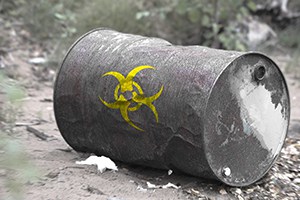 It’s important for companies to fully understand the definition of ‘hazardous waste’ in order to provide a safe, EPA-compliant workplace that’s not a threat to workers or the environment. But what exactly is the definition of hazardous waste? And what steps should companies take to prevent the chance of spills and accidents from occurring? To learn the answers to these questions and more, keep reading.
It’s important for companies to fully understand the definition of ‘hazardous waste’ in order to provide a safe, EPA-compliant workplace that’s not a threat to workers or the environment. But what exactly is the definition of hazardous waste? And what steps should companies take to prevent the chance of spills and accidents from occurring? To learn the answers to these questions and more, keep reading.
Hazardous Waste: Defined
Hazardous waste is technically defined as “dangerous or potentially harmful to our health or the environment. Hazardous wastes can be liquids, solids, gases, or sludges. They can be discarded commercial products, like cleaning fluids or pesticides, or the by-products of manufacturing processes.” This definition is somewhat general, leaving companies to speculate even further as to what’s hazardous and what’s not.
Different Types of Hazardous Waste
According to the EPA, hazardous waste typically falls under one of four different categories. Please refer to the list below for a brief overview of the different types of hazardous waste:
- Listed Wastes – Specific wastes identified and listed by the EPA in either the F, K, P and/or U list. The EPA is constantly adding new hazardous wastes to these lists, so companies should take a proactive approach towards identifying new wastes. These lists are readily available for companies to view.
- Characteristics Wastes – Although they aren’t specifically listed under the F, K, P and/or U ‘listed’ wastes, characteristic wastes exhibit ignitability, corrosivity, reactivity, or toxicity properties. This, of course, makes them dangerous to both humans and the environment when not properly stores or maintained.
- Universal Wastes – This is a rather unique type of hazardous waste, as it’s a general ‘catch all’ for hazardous materials. Mercury thermometers (yes, people still use them), compact fluorescent light bulbs, and batteries all fall under the category of universal wastes.
- Mixed Wastes – Mixed wastes contain both ignitability, corrosivity, reactivity, or toxicity.
How To Identify Hazardous Waste In The Workplace
Each of the previously mentioned types of hazardous wastes require a different approach to storing, maintaining and processing. However, companies first need to identify which hazardous waste types are used in their workplace. The easiest way to accomplish this is by following the Hazardous Waste Identification Guide outlined at the EPA’s official website. It walks you through the process with a set of four questions. As you answer each question, it will narrow your hazardous waste down to a specific type. Then, you can select the proper hazardous waste containers.